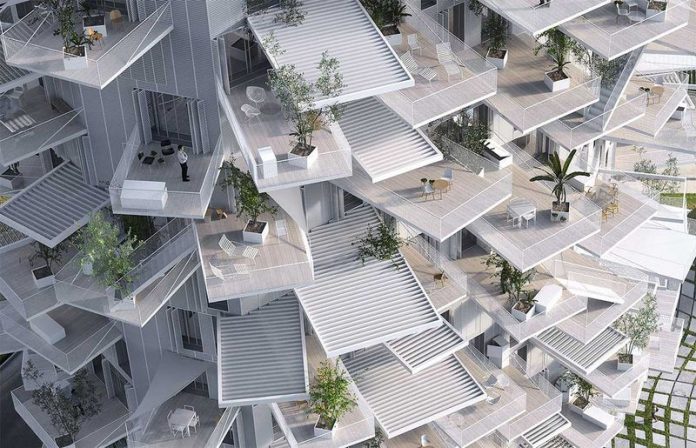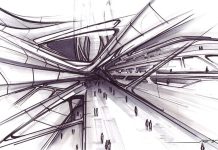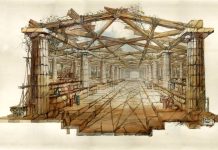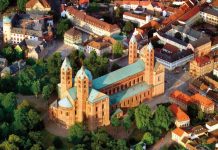In the book “The Crisis of European Humanity and Transcendental Phenomenology” written in the mid-30s of our century, the greatest philosopher, idealist of our time Edmund Husserl shows that the roots of the European crisis should be sought in a wayward rationalism. But this does not mean that rationality as such is evil or that it plays an insignificant role in the totality of human existence. Husserl speaks of rationality in the noble and true, authentic Greek sense; it was the ideal in the classical period of Greek philosophy. The form of development in Enlightenment rationalism was, in Husserl’s opinion, a mistake.
At the beginning of our century, Husserl put forward the idea of a universal science, united by a single method and requiring a universal individual. It is not by chance that the figure of the famous physicist Albert Einstein is so attractive, in particular, as a great artist in search of “architectural points of view” on the problems of science and the “formal symmetry” of the world. In the context of these ideas, and the judgment of the profound thinker and philosopher of art Paul Valery that “the rejection of overly simplistic concepts concerning not only the structure of matter, but also the formation of ideas, represents the psychological conquest of our time… dogmatic interpretations disappear and the science of constructing hypotheses, names and models is freed from arbitrary theories and the cult of simplicity.”
Hence, apparently, the mathematical “temptation” of the architects of the “modern movement” Corbusier, Mies van der Rohe, Louis Kahn. Their work is in line with the traditions of rationalism and, being individually experienced by each of them, the “mysticism of pure thought” inherits the features of Plato’s abstract pantheism.
The architectural theory of the first half of the XX century inherits the traditions of life-building ideas of the Renaissance and Enlightenment. “The positive architectural value in the concept of “modern architecture” is the concept of “order”, and the negative “chaos”. An illustration of this position can be the title of the last lifetime collection of articles by V. Gropius “Apollo in Democracy. The cultural duty of an architect” (1967). In it, the architect is identified with Apollo. The content of this image is clearly revealed by the author: “The emotional mood of art and architecture swings like an eternal pendulum from the Dionysian pole to the Apollonian, from ecstasy and chaos to self-control and harmony. Democracy calls for the establishment of the power of Apollo.” In the above text, Dionysus personifies chaos, Apollo harmony, order. V. Gropius rejects the Dionysian orientation of architecture and focuses on the Apollonian, i.e. ordering principle. This is, according to the author, “the architect’s duty to society.”
In the architecture of the Ronchamp Le Corbusier chapel, built in the 50s, the picturesqueness of the composition replaces the programmatic purity of forms, “divine geometry”. In other words, the Dionysian tradition of rationalism corrects its other tradition of rational schemes of Cartesianism.
So intricately intertwined in the history of architecture are the traditions of rational, “put on a number”, compositional thinking in its numerical and geometric symbolism.
After all, in fact, says A. Losev, Plato was primarily influenced by non-idealistic mythology for centuries. He influenced mainly by his “constructive-logical methods”, which were necessary for a variety of worldviews. “Constructive and logical principles, the pathos of selfless service to the idea, the pathos of world harmony, principled antisystematism, restless dramatic dialogue and language are the solution to the mystery of Plato’s millennial significance.”
In fact, the whole history of architecture is accompanied by this fundamental idea, which recognizes symbolic geometry and its compositional variations in ordering schemes as an unconditional cultural value. Architecture, creating a dictionary of its art capable of translating the vast world of human experiences and impressions into a measurable world of building forms, has been choosing symmetry since ancient times, so widely represented in nature as a constructive principle. In symmetry, architecture has found its artificial form of imitation of living existence, putting the eternal idea of harmony and order into the concept itself.
Thanks to the imagination and imagination of the architect, ideas take shape in the search for an adequate, in terms of content, architectural composition. It embodies the meaning of the structure, its order, which the viewer, observing and reflecting, tries to understand. In the complex world of architectural design, the formation of the compositional order, the structural framework of the work is the essence of the creative imagination. This process of creating a pictorial construction of thought about space can, apparently, be called, following E. Kassirer, “an act of concentration and objectification of ideas and representations.”
When mastering any project task, there is a kind of symmetrical- semantic correlation of the conceived image, framed in concepts (through memories, associations, comparisons, analogies of conditions, etc.) and the possibilities of its graphic expression in the schemes of arrangement of the composition. A fairly frequent reference in the history of architecture to some motifs, most often symmetrical, geometric, taken as the basis of the composition, such as a cross, square, spiral, etc., allows us to talk about structural “archetypes” in architecture. Such archetypal compositional symbols can, following A. Losev, be interpreted as “generative principles” of shaping.



















